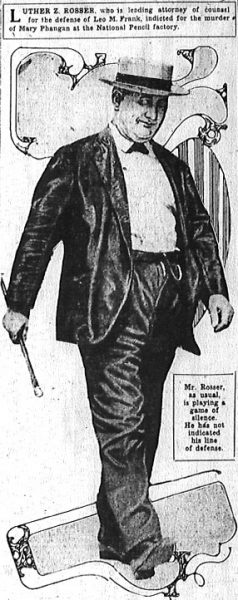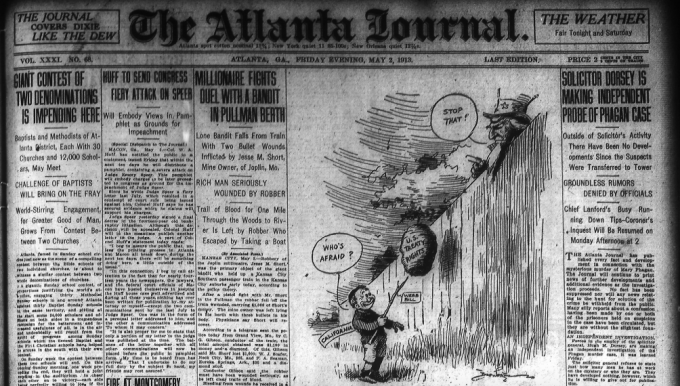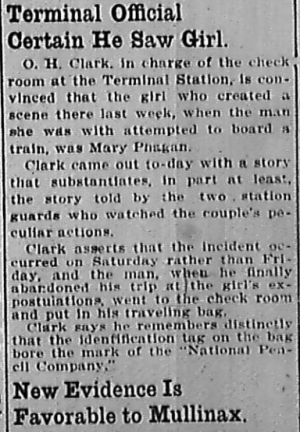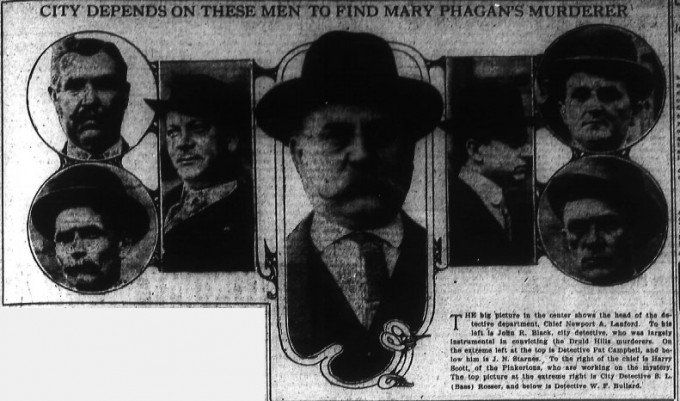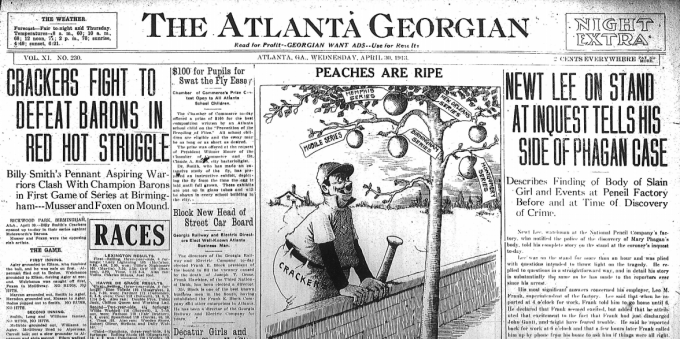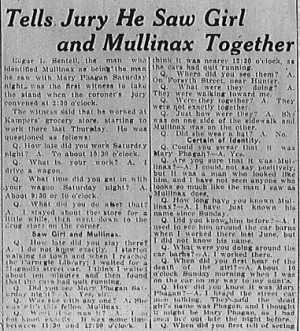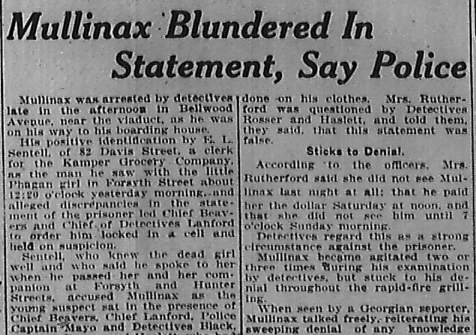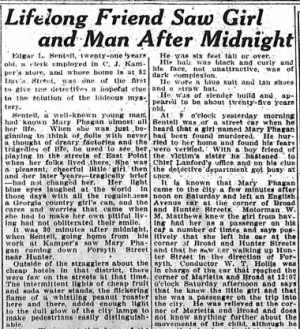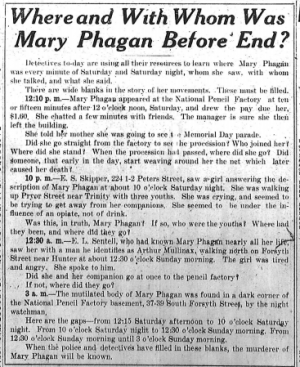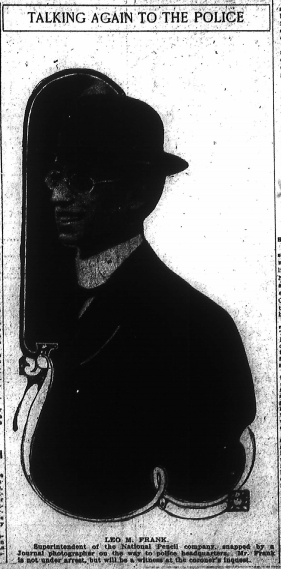
Leo M. Frank. Superintendent of the National Pencil company, snapped by a Journal photographer on the way to police headquarters. Mr. Frank is not under arrest, but will be a witness at the coroner’s inquest.
Another in our series of new transcriptions of contemporary articles on the Leo Frank case.
Atlanta Journal
Tuesday, April 29th, 1913
Detectives Building Case on Theory that Frank and Negro Can Clear Mystery
Chief Lanford Believes That Testimony of the Superintendent and Negro Night Watchman May Lead to the Arrest of the Person Guilty of the Atrocious Crime That Has Shocked the Whole City—No Further Arrests Expected Soon
MRS. FRANK IN TEARS AT POLICE STATION WHILE HUSBAND IS UNDER EXAMINATION
Frank Was Confronted by Negro Night Watchman—His Attorney, Luther Z. Rosser, Present at Inquiry, Which Was Conducted by Chief Beavers, Chief Lanford and Detectives Behind Closed Doors—Conference Still in Progress at 2
At 1:35 o’clock Tuesday afternoon Chief of Detectives N. A. Lanford, announced that L. M. Frank, superintendent of the National Pencil company’s factory, where Mary Phagan was found murdered early Sunday morning, would be detained by the police until after the coroner’s inquest. The inquest will be resumed Wednesday morning at 9 o’clock.
Chief Lanford made this statement when he emerged from a conference which had been in progress in his office on the third floor of the police station since shortly after 1 o’clock. Continue Reading →


